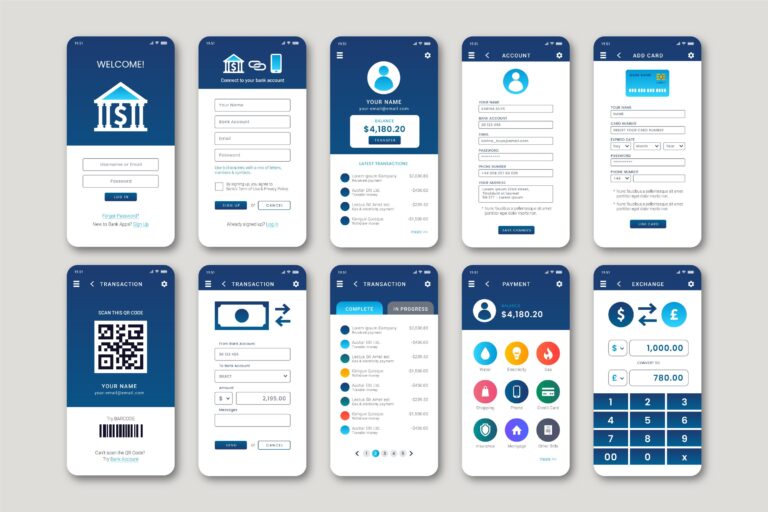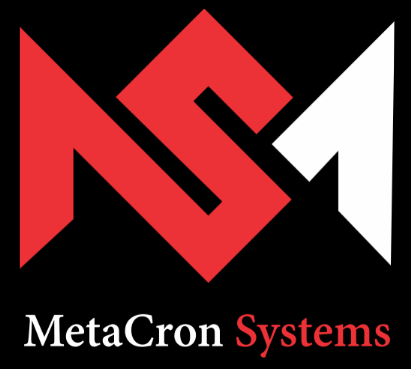Mobile Application Development

Metacron Systems is a trusted Top Mobile Application development company in India providing custom mobile application development services. In today’s fast-paced digital landscape, mobile application development have become an integral part of our daily lives. From ordering food to managing finances, and from staying connected with friends to tracking fitness goals, mobile apps have transformed the way we interact with the world. If you’re looking to venture into the world of mobile app development or seeking to hire a mobile app development company, this guide will provide you with essential insights into the process, trends, and best practices.
I. Understanding Mobile Application Development
Mobile application development involves the creation of software applications that run on mobile devices, such as smartphones and tablets. These apps serve various purposes, catering to users’ needs, entertainment, and business requirements. The development process typically includes:
- Idea Generation: It all starts with a concept. Identify a problem or a need that can be addressed through a mobile app. Conduct market research to understand user preferences and competition.
- Platform Selection: Choose the platform(s) for your app. You can develop for iOS, Android, or both (cross-platform development). Consider your target audience and budget when making this decision.
- Design: User experience (UX) and user interface (UI) design are crucial for app success. Create wireframes and prototypes to visualize the app’s functionality and appearance.
- Development: Developers write the code that brings your app to life. Choose the right programming language and tools for the platform you’ve selected.
- Testing: Rigorous testing ensures that your app functions correctly, is secure, and offers a seamless user experience. Identify and fix bugs during this phase.
- Deployment: Publish your app to app stores like Apple App Store and Google Play. Follow their guidelines and requirements.
- Maintenance: Regularly update your app to fix issues, introduce new features, and stay compatible with the latest devices and operating system versions.
II. Key Trends in Mobile Application Development
The mobile application development landscape is ever-evolving, and staying up-to-date with the latest trends is essential for success. Some key trends to watch for include:
- 5G Integration: With the rollout of 5G networks, apps can deliver faster and more reliable performance. Consider leveraging this technology for enhanced user experiences.
- Artificial Intelligence (AI) and Machine Learning (ML): Integrating AI and ML into your app can provide personalized recommendations, predictive analytics, and automation.
- Augmented Reality (AR) and Virtual Reality (VR): AR and VR apps offer immersive experiences in various industries, from gaming and education to healthcare and retail.
- IoT Integration: The Internet of Things (IoT) allows apps to connect and control smart devices. Explore opportunities for IoT integration in your app.
- Security and Privacy: User data security and privacy are paramount. Ensure your app complies with data protection regulations and employs robust security measures.
III. Best Practices for Mobile Application Development
To ensure the success of your mobile app, follow these best practices:
- User-Centered Design: Prioritize the user experience. Make your app intuitive, responsive, and visually appealing.
- Performance Optimization: Optimize your app for speed and efficiency. Minimize load times and resource consumption.
- Regular Updates: Continuously improve your app based on user feedback and technological advancements.
- Cross-Platform Development: Consider cross-platform frameworks like React Native or Flutter to reach a broader audience with a single codebase.
- App Store Optimization (ASO): Optimize your app’s title, description, and keywords to improve its discoverability in app stores.
- Analytics: Implement analytics tools to gather insights into user behavior and app performance.
- Monetization Strategy: Decide on your app’s monetization strategy, whether through ads, in-app purchases, or subscriptions.
IV. Conclusion
Mobile app development is a dynamic and rewarding field, offering opportunities for innovation and business growth. By understanding the development process, staying updated on trends, and following best practices, you can turn your mobile app idea into a successful reality. Whether you’re a developer, entrepreneur, or business owner, the world of mobile apps awaits your creativity and expertise.
Android App Development
In today’s digital age, Android app development has become a critical skill for developers and entrepreneurs alike. With the Android platform’s widespread adoption and constantly growing user base, creating innovative and user-friendly Android applications can be both rewarding and profitable. This guide will walk you through the essential steps and best practices for Android app development, whether you’re a beginner or looking to refine your skills.
Table of Contents:
1. Getting Started with Android Development
- Setting up your development environment
- Understanding the Android ecosystem
- Choosing the right development tools
2. Java and Kotlin: The Programming Languages of Android
- Exploring the differences between Java and Kotlin
- Getting familiar with Kotlin for modern Android development
3. Understanding the Android Architecture
- An overview of Android’s architecture components
- Activities, Fragments, and Views: Building blocks of Android apps
4. Designing Your User Interface
- Material Design principles for Android
- XML layout files and Android’s View hierarchy
- Using the Android Studio Layout Editor
5. Working with Data
- Storing data: SQLite databases, Shared Preferences, and more
- Networking and APIs: Fetching data from the web
- Best practices for data storage and management
6. Building User Interactions
- Handling user input with event listeners
- Implementing navigation between screens
- Creating interactive and responsive UIs
7. Enhancing User Experience
- Utilizing animations and transitions
- Notifications and background processing
- Implementing accessibility features
8. Testing and Debugging
- Writing unit and UI tests with Android’s testing framework
- Debugging tools and techniques
- Handling crashes and errors gracefully
9. Publishing Your App
- Preparing your app for the Google Play Store
- Understanding app permissions and privacy
- Strategies for app promotion and marketing
10. Continuous Learning and Resources
- Staying up-to-date with Android updates
- Online communities and forums for Android developers
- Recommended books, courses, and blogs for further learning
IOS Application Development
Welcome to the world of iOS application development, where creativity meets technology, and innovation knows no bounds. This comprehensive guide will take you on a journey through the exciting realm of iOS app development, providing you with the knowledge and skills needed to create stunning and functional applications for Apple’s mobile devices.
Chapter 1: Getting started with iOS Development
- Understanding the iOS Ecosystem
- Setting Up Your Development Environment (Xcode, macOS)
- Introduction to Swift Programming Language
- Creating Your First “Hello World” App
- The iOS App Lifecycle
Chapter 2: UI Design and User Experience
- Principles of Effective User Interface Design
- Storyboards and Interface Builder
- Creating User-friendly Interfaces
- Auto Layout and Adaptive UI
- Implementing Gestures and User Interactions
Chapter 3: Building the App Logic
- Understanding Model-View-Controller (MVC) Architecture
- Working with Data: Arrays, Dictionaries, and Core Data
- Networking and Fetching Data from APIs
- Handling User Inputs and Form Validation
- Implementing Navigation and Tab Bar Controllers
Chapter 4: Advanced UI Components
- Custom Views and Subclasses
- Collection Views and Table Views
- Animations and Transitions
- Building Responsive and Interactive Interfaces
- Integrating Third-party Libraries and SDKs
Chapter 5: Data Persistence and Storage
- Storing Data Locally with UserDefaults
- Working with Core Data for Robust Data Management
- Using iCloud for Data Sync
- Integrating Cloud Services (Firebase, AWS)
- Security and Data Encryption
Chapter 6: Integrating Multimedia
- Handling Images and Videos
- Audio Playback and Recording
- Augmented Reality (AR) Integration
- Core Image and Image Processing
- Implementing Camera and Photo Gallery Features
Chapter 7: App Testing and Debugging
- Testing Strategies: Unit Testing, UI Testing, and More
- Debugging Techniques and Tools
- Profiling and Optimization
- Dealing with Common Bugs and Issues
- User Feedback and Beta Testing
Chapter 8: App Distribution and Monetization
- App Store Submission Guidelines
- App Store Connect: Preparing for Submission
- Marketing Your App
- In-App Purchases and Monetization Strategies
- App Store Optimization (ASO)
Chapter 9: Continuous Learning and Resources
- Staying Updated with iOS Trends
- iOS Development Communities and Forums
- Online Courses and Tutorials
- Books and References
- Attending Apple’s WWDC and Developer Conferences
Chapter 10: Future Trends and Emerging Technologies
- SwiftUI and Combine: The Future of iOS Development
- ARKit and VR Integration
- Machine Learning and Core ML
- IoT and HomeKit Integration
- Privacy and Security in App Development
